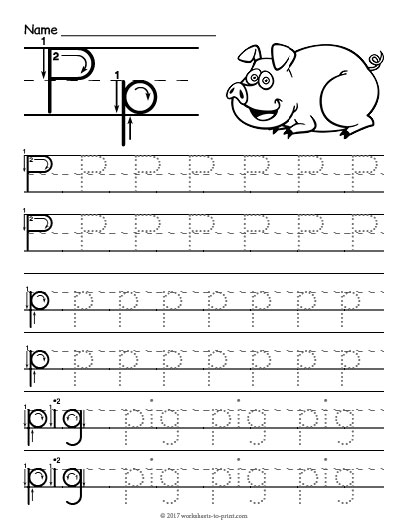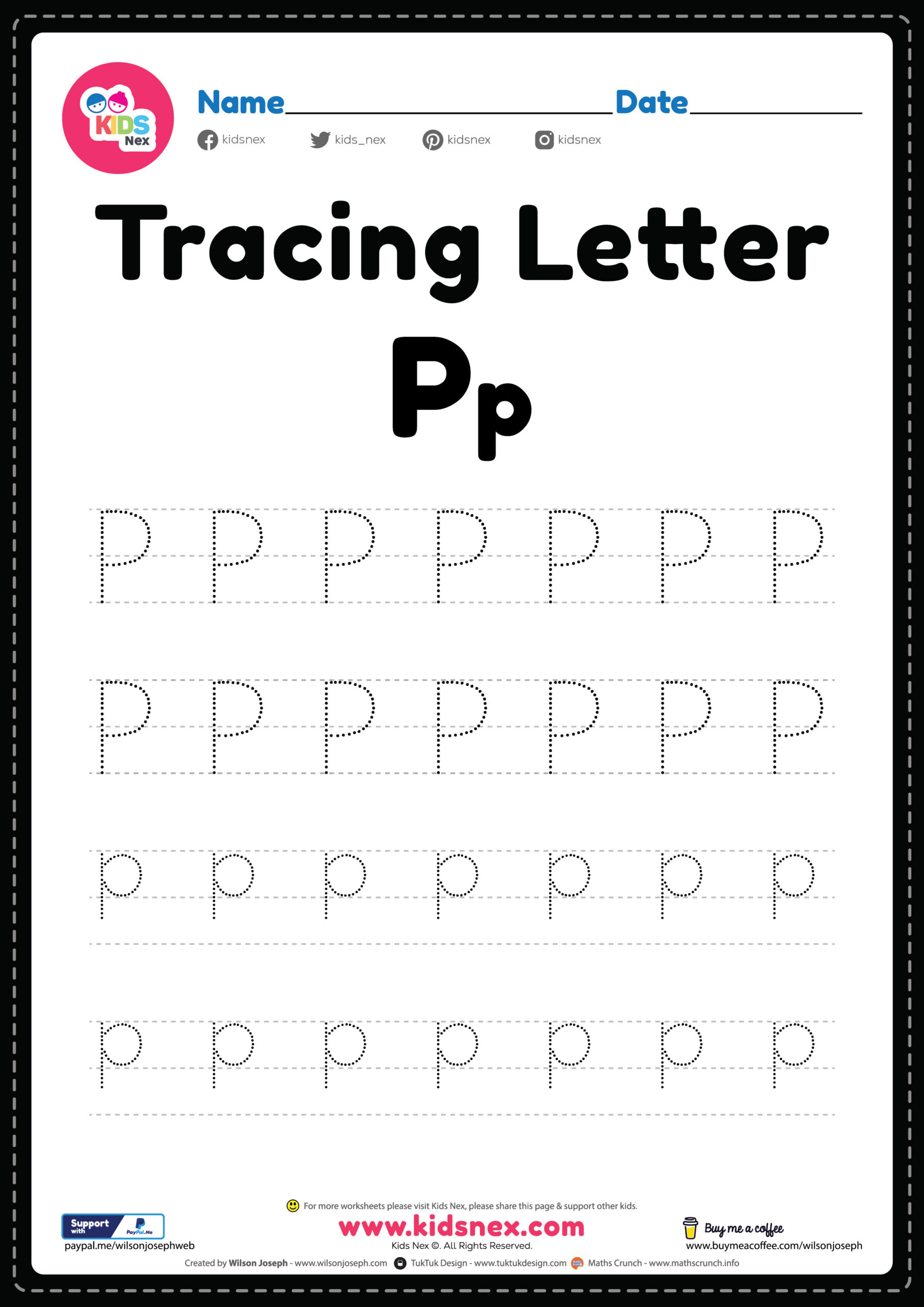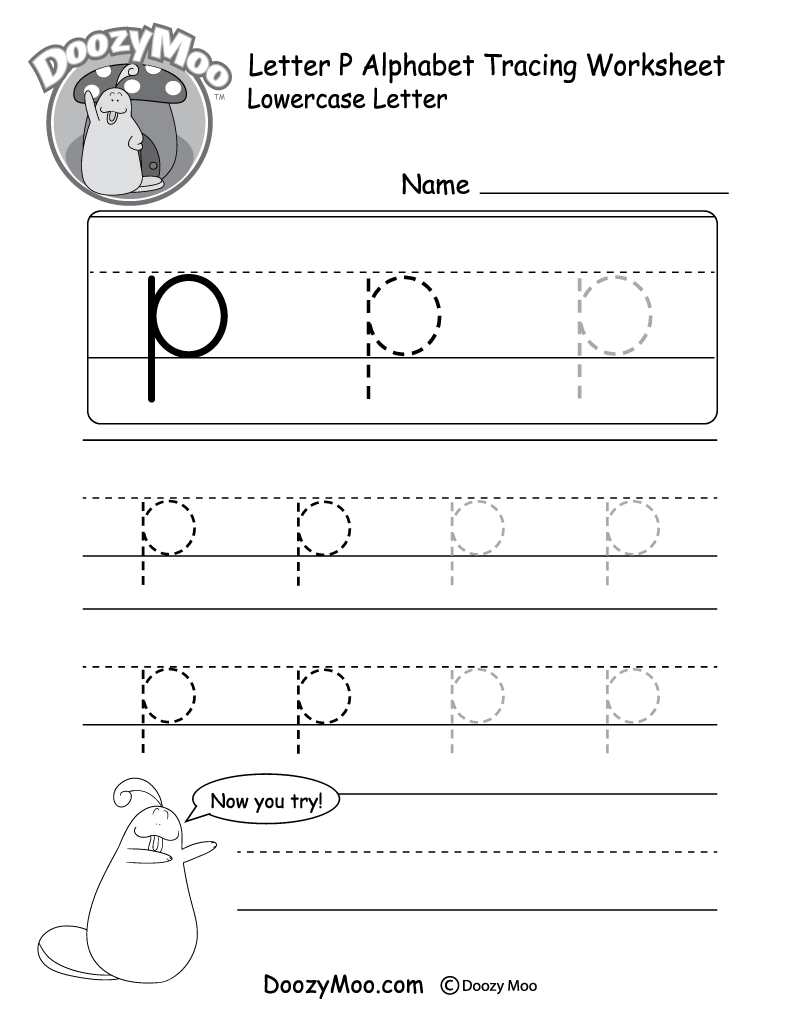Tracing Letter P
If you're a parent or teacher, you know that teaching young children the English language can be a daunting task. One of the challenges that children face while learning the English language is tracing letters. Tracing letter p, in particular, can be a struggle for many children. But fear not, in this post, we'll explore the target of tracing letter p and how you can help your child or student overcome this challenge.
The Struggle of Tracing Letter P
Learning to trace letters is a vital part of your child's early education. However, tracing letter p can be difficult for many children. Children may struggle with tracing letter p because they can find it challenging to get the curves and loops right. This issue can be compounded for children who have fine motor control challenges or dysgraphia. This struggle can lead to frustration, leading children to feel like they aren't making progress in their studies.
The Target of Tracing Letter P
The target of tracing letter p is to improve a child's fine motor skills while teaching them one of the fundamental building blocks of the English language. Exercises like the ones mentioned below are perfect to help children develop a better understanding of tracing letter p:
- Tracing worksheets
- Letter formation drills
- Finger tracing activities
- Letter recognition games
Tips for Tracing Letter P
Parents and teachers can help their children and students improve their letter tracing abilities with the following tips:
- Allow children to take their time when tracing
- Utilize Multi-sensory activities when teaching letter tracing
- Offer positive reinforcement
- Use tracing workbooks with engaging illustrations or pictures to make it more enjoyable for children
My Experience with Tracing Letter P
As a teacher, I have had many students who have struggled with tracing letter p. One of the best things that I've found to be helpful is giving them plenty of opportunities to practice tracing. Furthermore, using letter formation drills and letting children go at their own pace often leads to fewer frustrations. Using a multi-sensory approach can also be immensely helpful for children with dysgraphia or other fine motor control challenges.
Common Mistakes while Tracing Letter P
One common issue that children face while tracing letter p is they sometimes have trouble keeping their loops consistent and in the same size. Mistakes in tracing letter p can lead to frustration. To avoid this mistake, give children opportunities to practice letter p tracing exercises. Moreover, try to let children go at their own pace to help alleviate stress and anxiety.
Letter P Tracing Worksheets
Letter P tracing worksheets are a great way to help children improve their tracing abilities. With plenty of variety, such as different styles of letter P formation and engaging illustrations, these worksheets make letter tracing fun and enjoyable for children. Using these worksheets is a fantastic way to help children learn in a low-pressure environment, allowing them to develop their tracing abilities without the stress that can sometimes arise.
Question and Answer
Q1. How can parents and teachers involve more fun while tracing letter P?
A. Parents and teachers can use tracing worksheets that incorporate images or colours to help make tracing letter P more enjoyable for children. You can also encourage children to make letter P formation a part of fun games like treasure hunts or other engaging activities.
Q2. Can tracing letter P improve a child's ability to read and write?
A. Yes, tracing letter P is a fundamental building block of the English language, and mastering it can lead to improved reading and writing abilities. Tracing letters helps children recognize and memorize different letters, resulting in increased reading and writing proficiency.
Q3. What other benefits can children reap from tracing letter P?
A. Tracing letters is not just beneficial for language development. It can also help enhance a child's hand-eye coordination and fine motor control abilities.
Q4. At what age should children start tracing letters?
A. Children can start tracing letters as young as two years old. It is essential to note that at this age, tracing should be done in a non-pressure environment and for short periods to avoid burnout.
Conclusion of Tracing Letter P
Tracing letter P is an essential part of developing a child's language and fine motor skills. By utilizing helpful tips and tools like tracing worksheets, parents and teachers can help their children and students develop strong letter tracing skills, leading to improved reading and writing abilities, hand-eye coordination, and fine motor control. With practice, patience, and a little bit of fun, your child or student can master tracing letter P in no time!
Gallery
Alphabet Letters Tracing Worksheets

Photo Credit by: bing.com / worksheet
Tracing Letter P Worksheet

Photo Credit by: bing.com / letter tracing worksheets worksheet printable letters handwriting kids alphabet start writing head pig practice print preschool kindergarten printables activities give
Letter Tracing Worksheets (Letters K - T)

Photo Credit by: bing.com / letter tracing worksheet worksheets alphabet printable letters pdf
Free Printable PDF - Tracing Letter P Alphabet Worksheet PDF

Photo Credit by: bing.com / practice handwriting
Tracing Letter P Worksheets - TracingLettersWorksheets.com

Photo Credit by: bing.com / lowercase moo doozy trazo tracinglettersworksheets educativas
